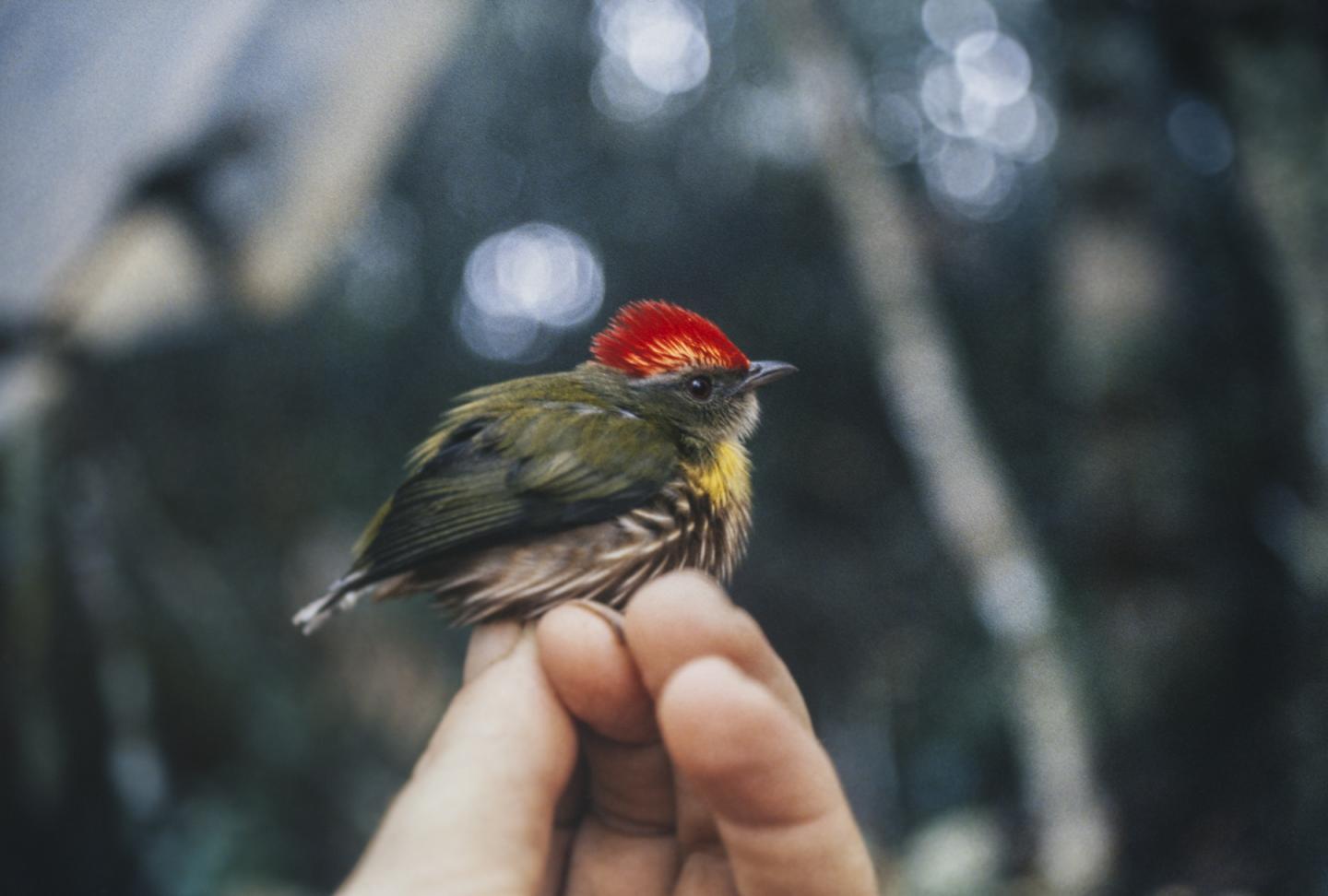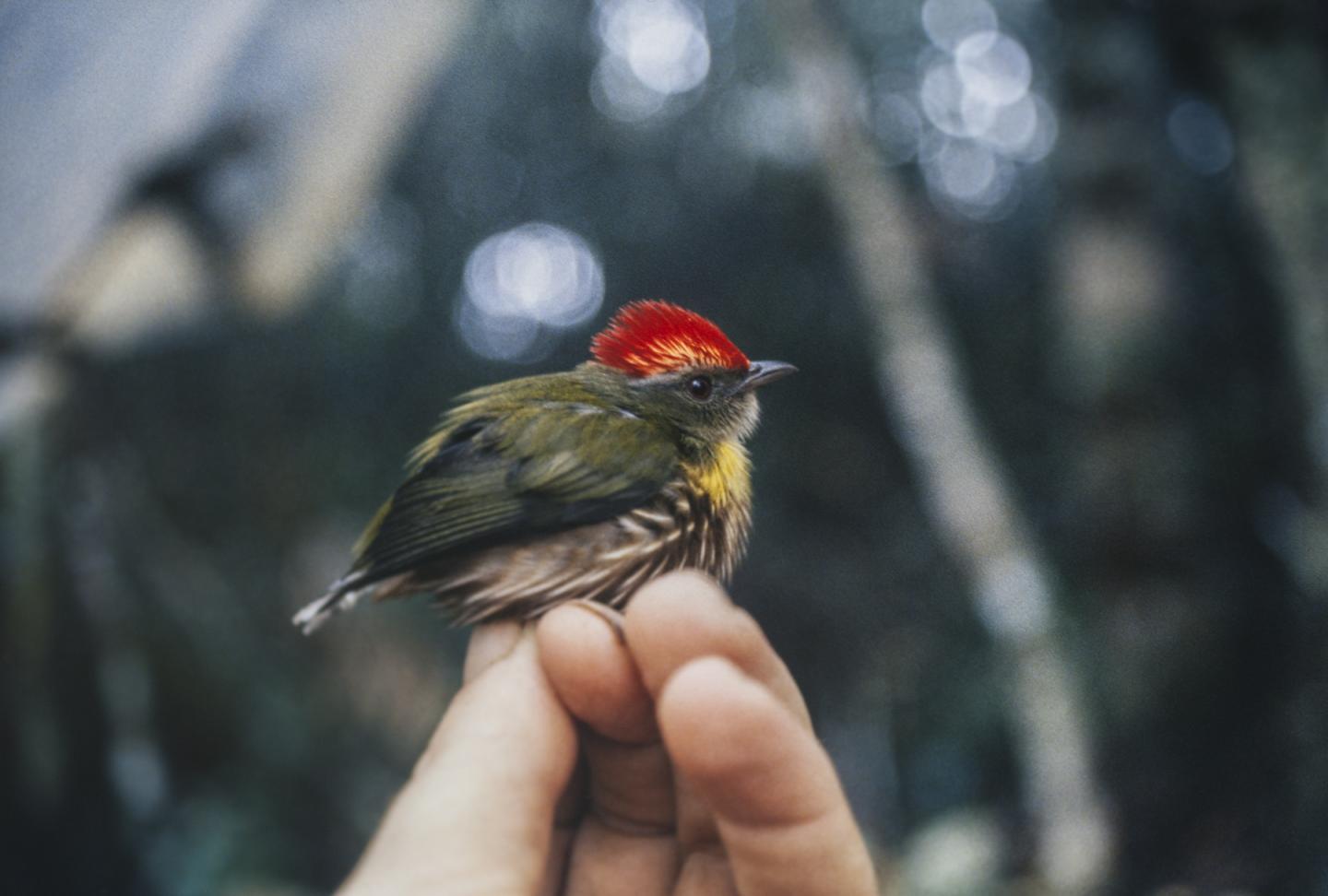
Credit: Andy Kratter/Florida Museum of Natural History
GAINESVILLE, Fla. — A new species of bird from the heart of Peru remained undetected for years until researchers identified it by its unique song.
In 1996, a group of Louisiana State University and Florida Museum of Natural History researchers traveled to the Cordillera Azul, an isolated mountain ridge in Peru, where they discovered a previously unknown manakin species.
With its bright yellow front feathers, the bird was different from the local subspecies of striped manakin, but nearly identical to the subspecies Machaeropterus regulus aureopectus found in the distant Venezuelan tepuis. But it has a completely different voice.
The newly discovered manakin's song lacks undertones and has a one-noted rising vocalization, rather than two-noted falling vocalization with undertones or a falling monosyllabic vocalization with undertones.
It was given the name Machaeropterus eckelberryi, commemorating the 20th century bird illustrator Don Eckelberry.
Andy Kratter, a museum ornithology collection manager, said the differences went unnoticed for years because the research team didn't have vocalizations for all of the bird species.
"We kind of sat on it for a long time because we didn't have vocalizations of the birds in Venezuela, and this bird is different from the local birds but close enough to the Venezuelan birds that it might have been considered the same species," he said. "In manakins, it's often subtle clues that might be different among species."
The discovery of the new species and details of the expedition were recently published in Zootaxa.
Kratter said finding the new species and the isolated mountain ridge were important for the scientific community, in part because the discovery spurred Peru to preserve the area.
"The Peruvian government established a national park in the area in the early 2000s, mainly as a result of finding this novel diversity in this area, which our expedition did," he said. "Finding these guys opened up a little more inventory and exploration, which led to the formation of this gigantic national park."
Dan Lane, leader of the expedition and a research associate at LSU, was the first to record the new species, and he said it is one more bird for the ornithological community to include in their studies.
"Even if we weren't discovering new species, just exploring regions of the world that are still poorly known and getting a better picture of where species are distributed, what habitats they use and how we may use this knowledge to preserve them is a worthwhile activity," he said. "Peru still has many treasures hidden in unexplored nooks and crannies, and I'd be lying if I said I didn't enjoy the opportunity to uncover them. To this day, it may be some of the most virgin terrain I've ever visited."
###
A grant from the National Geographic Society's Fund for Research and Exploration funded the research in 1996.
Media Contact
Paul Ramey
[email protected]
352-273-2054
Original Source
https://www.floridamuseum.ufl.edu/science/new-peruvian-bird-species-discovered-by-its-song/ http://dx.doi.org/10.11646/zootaxa.4320.2.11





